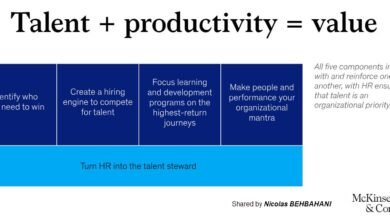
By | IamInMarketing
In an era where customer engagement is paramount, businesses are turning to innovative technologies to provide seamless and personalized experiences. Among these technologies, chatbots have emerged as a dynamic tool for enhancing customer interactions and satisfaction. With the capability to engage users in real-time conversations, chatbots are transforming the landscape of customer service, sales, and user support. These virtual assistants, powered by artificial intelligence and natural language processing, offer instant responses, personalized recommendations, and round-the-clock availability. As we delve into the realm of chatbots and their impact on customer engagement, this article explores the various applications, benefits, challenges, and best practices associated with integrating chatbots into business strategies. Join us as we uncover how chatbots are reshaping the user experience, ensuring seamless interactions, and propelling businesses towards a new era of enhanced customer satisfaction.
Understanding Chatbots
Chatbots are automated communication tools powered by artificial intelligence (AI) that simulate human conversation. These digital agents interact with users through text or voice, providing instant responses and assistance. By analyzing user queries and utilizing pre-programmed algorithms, chatbots can effectively understand the context and intent behind messages. This enables them to offer personalized and relevant solutions, enhancing customer engagement in various industries, including content marketing. In the realm of customer service, chatbots have emerged as powerful tools, enabling businesses to efficiently manage large volumes of inquiries while delivering timely and consistent support. From simple tasks like answering FAQs to more complex interactions, chatbots are pivotal in optimizing user experiences by providing quick, accurate, and round-the-clock assistance.
Benefits of Chatbots in Customer Engagement

Chatbots offer a multitude of benefits that significantly contribute to enhancing customer engagement:
24/7 Availability: Chatbots operate round-the-clock, providing users with instant responses and assistance regardless of the time, boosting customer satisfaction.
Instant Responses: With rapid response times, chatbots reduce waiting periods, ensuring that users receive timely information and solutions, leading to improved user experiences.
Consistent Interaction: Chatbots ensure consistent and standardized communication, avoiding variations in responses that might occur with human agents.
Scalability: Chatbots handle multiple interactions simultaneously, making them ideal for managing high volumes of inquiries during peak periods without compromising on quality.
Personalization: Through data analysis, chatbots can deliver tailored recommendations and solutions, creating personalized experiences that resonate with individual users.
Cost Efficiency: Automating routine tasks through chatbots reduces the need for large customer support teams, resulting in cost savings for businesses.
Data Collection and Analysis: Chatbots gather valuable user data during interactions, providing businesses with insights to improve their products, services, and customer journeys.
User Engagement and Retention: The interactive nature of chatbots enhances user engagement and encourages return visits, leading to improved customer retention rates.
Lead Generation: Chatbots can qualify leads, gather contact information, and direct potential customers to appropriate resources, contributing to sales and business growth.
Enhanced User Experiences: By swiftly addressing user inquiries and concerns, chatbots elevate customer experiences, fostering positive perceptions of the brand.
Incorporating chatbots into customer engagement strategies empowers businesses to provide efficient, personalized, and round-the-clock support, ultimately elevating the overall user experience.
Types of Chatbot Applications

Chatbots are versatile tools that find application across various domains, enhancing customer engagement and streamlining operations. Here are some common types of chatbot applications:
Customer Support Chatbots: These chatbots handle customer inquiries, troubleshoot issues, and provide information, ensuring users receive quick and accurate assistance.
E-commerce Assistance: E-commerce chatbots help users browse products, provide product recommendations, process orders, and answer queries about shipping and returns.
Appointment Scheduling: Chatbots can facilitate appointment bookings, confirmations, and reminders, streamlining the scheduling process for users and businesses.
Lead Generation and Qualification: Chatbots engage with website visitors, gather contact information, and qualify leads based on predefined criteria, aiding in the sales process.
FAQ and Information Retrieval: These chatbots are designed to provide instant answers to frequently asked questions and retrieve relevant information from knowledge bases.
Interactive Content Delivery: Chatbots can deliver interactive content such as quizzes, polls, and surveys, engaging users and collecting valuable insights.
Feedback and Surveys: Chatbots can initiate post-interaction surveys or gather feedback, helping businesses understand user satisfaction and identify areas for improvement.
Language Translation: Chatbots equipped with language translation capabilities assist users in communicating across language barriers, promoting inclusivity.
Social Media Engagement: Chatbots on social media platforms engage users by responding to comments, messages, and posts, enhancing brand presence and user interactions.
Entertainment and Games: Chatbots offer entertainment through interactive stories, games, and quizzes, keeping users engaged and fostering brand loyalty.
Personal Finance Management: Finance-focused chatbots help users track expenses, set budgets, and provide financial advice, promoting financial wellness.
Healthcare Assistance: Health chatbots can offer symptom analysis, health advice, and medication reminders, enhancing access to healthcare information.
HR and Recruitment: Chatbots assist in initial candidate screenings, answering job-related queries, and providing information about company culture.
The versatility of chatbots makes them valuable assets for businesses aiming to enhance customer engagement and streamline various aspects of their operations. By choosing the right type of chatbot for specific applications, businesses can create seamless and interactive user experiences.
Creating Effective Chatbot Interactions
While chatbots offer convenience and efficiency, crafting effective interactions is crucial for a positive user experience. Here’s how to create engaging and helpful chatbot interactions:
Clear and Natural Language: Design chatbot responses using simple, natural language that users can easily understand. Avoid jargon or overly technical terms.
Personalization: Incorporate user data to personalize interactions. Address users by their names and use their preferences to offer tailored recommendations.
User-Focused Approach: Keep user needs at the forefront. Understand their intent and provide relevant solutions promptly.
Prompt Responses: Aim for swift responses to maintain user engagement. Delayed responses can frustrate users and diminish the effectiveness of the chatbot.
Dynamic Responses: Instead of static replies, use dynamic responses that evolve based on user input. This ensures a more interactive and engaging conversation.
Multimedia Integration: Incorporate images, videos, and GIFs when appropriate to make interactions more engaging and visually appealing.
Visual Cues: Use icons, buttons, and visual elements to guide users and offer options for their next steps.
Transparency: If the chatbot is AI-driven, let users know that they are interacting with a bot. Transparency builds trust and sets appropriate expectations.
Seamless Handoff: For complex queries, ensure a smooth handoff to a human agent when necessary. Avoid frustrating users by transferring seamlessly and retaining context.
Error Handling: Anticipate user errors and provide helpful suggestions or clarifications. Avoid generic error messages that can frustrate users.
Contextual Understanding: Ensure the chatbot understands context and maintains conversation continuity even if users change topics or rephrase their queries.
Feedback Loop: Collect user feedback on chatbot interactions. Regularly analyze user feedback to identify areas for improvement and refine the chatbot’s responses.
Continuous Learning: Implement machine learning algorithms to enhance the chatbot’s capabilities over time. Regularly update the chatbot’s knowledge base to improve accuracy.
User Testing: Before launching, conduct thorough user testing to identify any usability issues, refine responses, and enhance the overall experience.
Empathy and Emotion: Infuse empathy and emotion into interactions, especially in sensitive scenarios. Show understanding and offer support where needed.
By focusing on user-centric design, personalization, and clear communication, businesses can create chatbot interactions that not only elevate customer engagement but also foster positive brand perceptions. The goal is to create interactions that feel natural, helpful, and meaningful to users, enhancing their overall experience with the chatbot and the brand.
Real-world Examples
To grasp the tangible impact of chatbots on customer engagement, let’s explore some real-world examples of businesses effectively utilizing chatbot technology:
Sephora’s Virtual Artist: Sephora’s chatbot helps customers virtually try on different makeup products using augmented reality. This interactive experience guides users in selecting the right products, enhancing customer satisfaction.
Domino’s Pizza: Domino’s chatbot takes food ordering to the next level. Customers can place their orders, track delivery, and get updates seamlessly through a chat conversation, making the process convenient and efficient.
H&M’s Stylist Bot: H&M’s chatbot acts as a personal stylist, suggesting outfits based on user preferences and style choices. This interactive approach enhances user engagement and encourages more purchases.
Bank of America’s Erica: Erica is Bank of America’s AI-powered chatbot, assisting customers with account management, bill payments, and financial advice. It simplifies complex financial tasks and enhances user experience.
1-800-Flowers’ GWYN: This chatbot guides customers through the flower selection process, helping them choose the perfect arrangement for various occasions. The chatbot’s personalized recommendations enhance the shopping experience.
AirAsia’s AVA: AirAsia’s chatbot, AVA, assists travelers with booking flights, managing reservations, and providing travel information. It offers quick and accurate responses, ensuring a smooth customer journey.
Duolingo’s Language Learning Bot: Duolingo’s chatbot engages users in language learning conversations, providing practical practice in real-life scenarios. It enhances user engagement and learning outcomes.
Amtrak’s Julie: Julie assists Amtrak passengers with booking tickets, checking schedules, and answering travel-related queries. Its efficiency reduces the need for lengthy phone calls or website navigation.
Hyatt’s Andaz Bot: Andaz Bot by Hyatt assists guests with hotel bookings, room service requests, and local recommendations. It enhances the overall guest experience by providing quick and personalized assistance.
Nestlé’s BabyNes Bot: Nestlé’s chatbot helps parents navigate through the baby formula selection process. It offers tailored advice and product information, providing valuable support to parents.
These real-world examples showcase how chatbots are transforming customer engagement across various industries, from retail and travel to finance and hospitality. By observing successful implementations, businesses can gain insights into how chatbots can be tailored to meet their specific customer engagement needs.
Conclusion
In the dynamic landscape of customer engagement, chatbots have proven to be a pivotal tool for enhancing interactions and streamlining communication. Their ability to provide immediate assistance, round-the-clock availability, and personalized responses has reshaped user experiences across industries. As technology continues to advance, chatbots are poised to become even more sophisticated, addressing challenges related to language comprehension and emotional nuance. While chatbots offer numerous benefits, balancing automation and the human touch is crucial. By integrating these digital assistants effectively into customer service strategies, businesses can forge stronger connections, gather valuable insights, and deliver seamless experiences that ultimately elevate user engagement and satisfaction in an evolving digital world.






